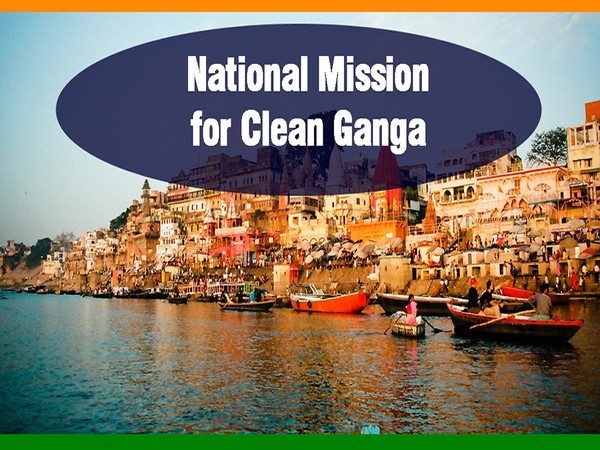Kanpur: The National Mission for Clean Ganga (NMCG) under the Namami Gange programme has sanctioned projects worth Rs 2,192 crore for Kanpur zone to prevent the flow of sewage water into the river.
Kanpur, a densely populated industrial city in Uttar Pradesh, is located on the banks of Ganga. The city, with an estimated population of 32 lakh, generates 450 million-liter of sewage and other solid waste every day. It has some 400 tanneries, which produce toxic effluents.
The untreated sewage from the city’s 16 major drains has been directly flowing into the river Ganga for a long time. To prevent this, the NMCG has been tasked with restricting 250 million liter untreated sewage water by tapping major drains.
Sisamau Nullah, which produces 140 MLD of domestic sewage every day, has completely been tapped. The untreated water from this Nullah has been diverted to Bangawan and Jajmau sewage treatment plants. This drain was infamous for the pollution it was causing to the river Ganga for the past many decades.
“As per our short-term action, we are diverting the drains to sewer and then to the sewerage treatment plant (STP), so that the water flows into the river after treatment,” said R K Agarwal, Regional Officer, UP Pollution Control Board, Kanpur.
Apart from urban sewage, leather industry in Kanpur is considered to be a primary source of industrial pollution in the Ganga.
With the launch of Namami Gange programme, stringent actions against the 260 odd tanneries have been taken so that no effluents flow into the river.
Many big tanneries have set-up their own effluent treatment plants that filter out some of the solid waste such as remnants of animal skin, sludge, and excreta. From here, the partially processed tannery sludge is sent for further treatment to a large common effluent treatment plant.
Shahid Anwar, the owner of Kanpur-based Ahmad International, said, “We are treating our effluents. After treatment, we send this water to Common and Combined Effluent Treatment Plant (CETP). The treated water then flows to farmlands and not in river Ganga.”
Each day, tanneries pump-out about 20 crore liters of polluted water. In this regard, the National Mission for Clean Ganga has approved a 20 MLD or million-liter daily effluent treatment plant at an estimated cost of Rs 554 crore for the treatment of effluent from tanneries.
Feroz Alam, Director of Jajmau Tannery Effluent Treatment Association in Kanpur, said: “Recently, the National Mission for Clean Ganga (NMCG) has launched a 20 MLD common effluent treatment plant for Jajmau for the treatment of effluent from tanneries. It will be a separate plant from domestic effluent. At present, the effluent from industry and domestic goes to the same treatment plant.”
The National Mission for Clean Ganga is digitally monitoring the flow of industrial effluents into River Ganga.
Rajiv Ranjan Mishra, Director General of National Mission for Clean Ganga, said, “The industries know that some institute will come randomly and do a thorough inspection and they may be closed. So, this has brought a lot of discipline. We are improving further. We are also trying to put online effluent quality monitoring so that manual tampering will not be possible.”
“Whatever quality of effluent quality is coming out of the industry it will be visible online to us, so we are trying to set up that kind of comprehensive monitoring center to monitor the effluent quality of industries as well as the effluent quality of sewerage treatment plants,” added Mishra.
The National Mission for Clean Ganga has initiated setting up of Sewage Treatment Plants in Kanpur, Varanasi, Allahabad, Mathura, Patna, Kolkata, Howrah-Bally and Bhagalpur, which contributes almost 64 percent of total sewage discharge.
Total STP capacity of 1109 MLD is being created at a cost of Rs 9,883 crore in these towns. The treated water from many of these STPs is used for irrigation.
Under the Amrit Yojana scheme, every house in the city is to be given a sewer connection so that the household waste will flow to treatment plants. The government’s efforts by restricting the flow of urban sewage and industrial effluents from cities like Kanpur will help keep the holy river clean.
[source_without_link]ANI[/source_without_link]

